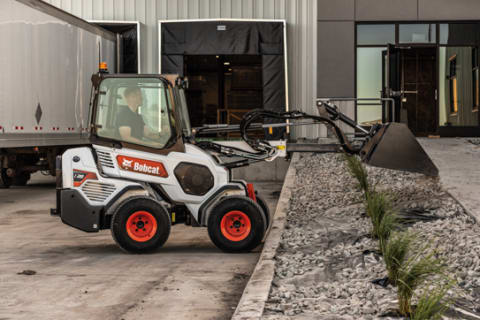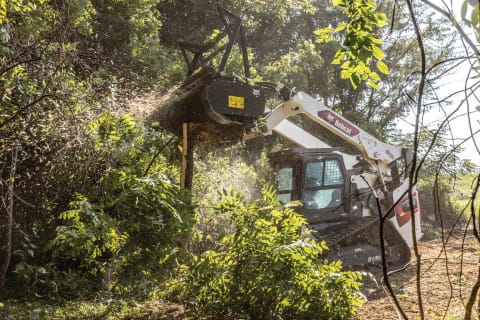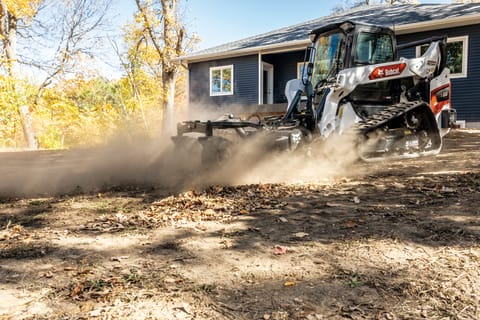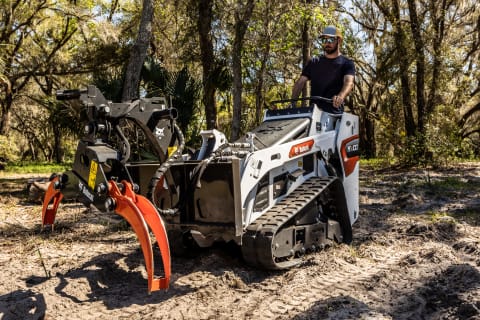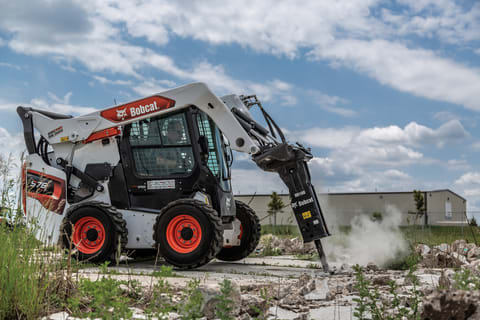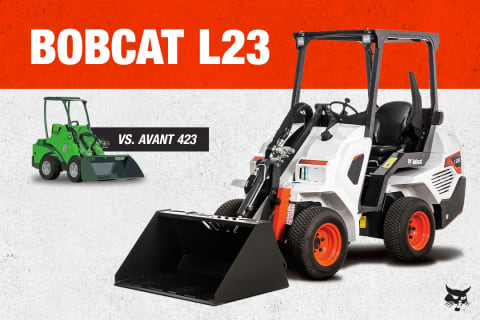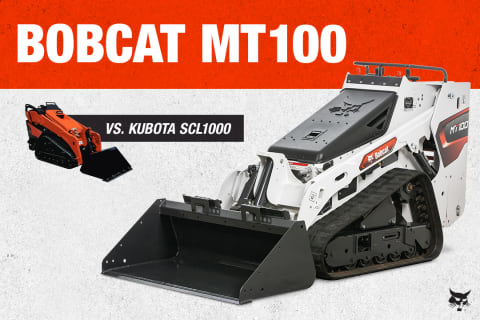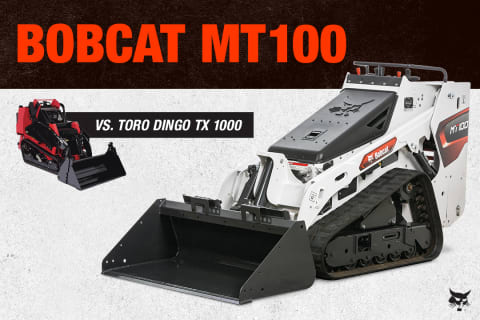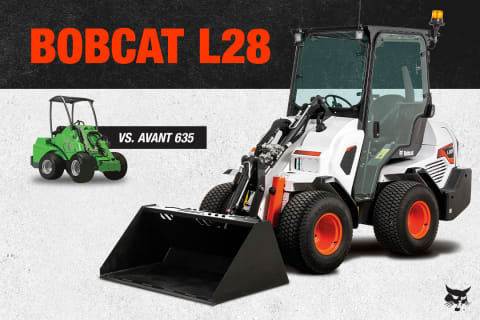- Home
- Buying Resources
- Loaders
- 7 Snow Safety Tips for Equipment Operators
Build Your Loader, Get a Free Price Quote
Customize your loader. Select the model, choose options, and submit to your local dealer for a free price quote.
Build & QuoteSnow-How: 7 Snow Safety Tips for Equipment Operators
Posted on December 1, 2018
Snow removal is tough work. Weather conditions can be harsh. Snow crews often work long hours in the dark. And there’s pressure to get the job done quickly. You have a lot to worry about. But the safety of your crew and the public should always be at the top of the list.
Making safety a priority starts with an ongoing training program and clear communication about what’s expected before your crews hit the road. Anyone who operates snow removal equipment should be trained on the equipment they will operate; techniques for pushing, blowing and piling snow or ice; and details on how to handle potential hazards.
Here are a few tips to help keep everyone safe.
Tip #1 — Put people first
Clearing snow is your mission. But safety is your priority. On the jobsite, block sidewalks on both ends with safety cones or post signs to let the public know crews are at work. While you may be under pressure to get a lot of properties cleared, don’t rush.
Train crews to work efficiently while being aware of their surroundings and watching for pedestrians, vehicles and obstacles. It’s important to always look in the direction of travel when operating. And make sure operators look out for kids — who love to climb and play in and around snow piles.
Tip #2 — Know the site
Preplanning is a critical step for keeping crews safe. Take the time to visit the site before the first snowfall when it’s easier to identify potential obstacles or hazards that might get covered in snow or hidden in the dark — including hydrants, drop-offs, curbs, posts, overhead obstructions and other structures.
Work with the property owner to mark items that could become buried and unseen if the snow gets deep enough. If you need to send operators to clear a site they never been to, have a co-worker accompany them to provide information on potential problems.
Tip #3 — Prep your equipment
Snow season can be hard on equipment. Make sure the batteries are fully charged and in good condition. Make sure all the machines have the proper fuel and engine oil for the temperatures you expect and the filters are in good condition. Conduct daily checks of fluids, attachments, tires/treads and lights, to help keep your equipment working and your operators safe.
Get a Free Price Quote From Your Local Dealer
Find A DealerTip #4 — Prep your body
When snow is predicted, put your crews on call and ensure they’ll be in good physical condition. Insist that they get plenty of rest and do not drink alcohol when a storm is approaching. Overly tired workers pose a safety threat to themselves and others. A zero-tolerance policy for drug and alcohol use is recommended.
Tip #5 — Dress the part
Night or day, bright or reflective clothing will help keep workers safer in low visibility conditions. In frigid temperatures, it’s important to wear layers and water-resistant boots and coats, as well as to bring extra gloves— even when working in a heated, enclosed cab. If crews need to work outside the cab or have an emergency, they’ll be better protected from the cold.
Tip #6 — Expect the unexpected
Even with the best planning, the unexpected can happen. Before heading out, crews should charge cellphones and take along important spare parts, a tool kit, flashlight and first aid kit. Operators should pack water and snacks to help keep them hydrated, alert and working at top performance.
Tip #7 — Know your customers’ safety requirements
Ask customers if they have specific property rules and regulations that they’d like your crews to be trained on.
For more information on safety and training resources for your business, check out the Bobcat Operator Training Kits and Safety Resources.
Explore More Loader Resources
View All Articles- Small Articulated Loaders Productivity for Grounds Maintenance
Small Articulated Loaders Productivity for Grounds Maintenance
Learn about how versatile and powerful small articulated loaders increase productivity and their advantages for ground-maintenance and landscaping professions. - How Compact Loaders are Beneficial for Forestry Work
How Compact Loaders are Beneficial for Forestry Work
Learn how Bobcat compact track loaders and skid-steer loaders provide versatility with attachments and machine power to increase your productivity for forestry work. - Landscaping Attachments for Compact Loaders
Landscaping Attachments for Compact Loaders
Explore the top landscaping attachments for your compact loaders, like compact track loaders for versatile productivity and power on the job. - Top Attachments for Mini Track Loaders
Top Attachments for Mini Track Loaders
Discover the top attachments from the 24 available for the Bobcat Mini Track Loaders for job-specific landscaping, grounds maintenance and forestry challenges. - Bobcat Attachments for Concrete Work with Compact Loaders
Bobcat Attachments for Concrete Work with Compact Loaders
Learn why Bobcat loaders are the machines of choice for concrete contractors with the productivity increase of Bobcat attachments specifically for concrete work. - How to Choose Compact Track Loader Tracks
How to Choose Compact Track Loader Tracks
The right compact track loader tracks can improve your machine’s performance, minimize ground disturbance and extend your working season in wetter months. - Bobcat L23 vs. Avant 423 Small Articulated Loaders
Bobcat L23 vs. Avant 423 Small Articulated Loaders
When choosing a small articulated loader, it can be overwhelming from the options. Explore this comparison of two popular options: the Bobcat L23 and Avant 423. - Bobcat MT100 vs Kubota SCL1000
Bobcat MT100 vs Kubota SCL1000
Every feature and specification matters, to obtain maximum production and output from a mini track loader. Compare the Bobcat MT100 against the Kubota SCL 1000. - Bobcat MT100 vs. Toro Dingo TX 1000
Bobcat MT100 vs. Toro Dingo TX 1000
When choosing a mini track loader, it is important to examine key features and benefits. Explore how the Bobcat MT100 stacks up against the Toro Dingo TX 1000. - Bobcat L28 vs. Avant 635 Small Articulated Loader
Bobcat L28 vs. Avant 635 Small Articulated Loader
Small articulated loaders provide impressive lifting capabilities. When looking at the Bobcat L28 compared to the Avant 635, here are some factors to consider.
